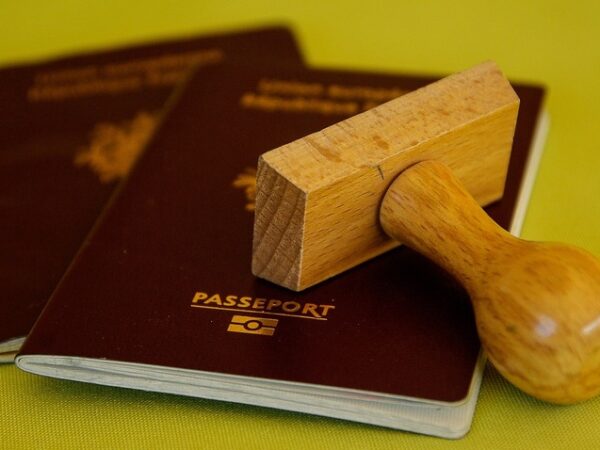It’s often said that one of the best things about remote working is that you can do it from anywhere—as long as you have a laptop and an internet connection, you’re good to go. In recent years, however, that hasn’t always been the case. Brexit means that UK citizens have lost their European freedoms and the pandemic has also complicated matters.
But all is not lost, as there are still ways for freelancers and other remote workers to explore the world without missing a day of work.
EU digital nomad visas were created with remote workers in mind and are becoming increasingly common in a post-pandemic world where remote working is the norm.
What are EU Digital Nomad Visas?
Freelancers exist in somewhat of a grey area when it comes to work visas and working abroad in general.
Technically, you need a work visa to work in another country, but that doesn’t usually apply to freelancers. They’re working for the same clients they have back home, and those clients might not be in the country they are visiting. It’s a different story if they are being hired by that company and required to live in another country to complete the job, but for the most part, freelancers can—and often do—work while visiting other countries as tourists.
In fact, there are many freelancers who spend their time hopping from one country to another, living for several months in each and working throughout.
Although there are some clear and obvious benefits to this profession, there is also one big downside.
As a freelancer, you can’t apply for a traditional work visa, which means you’re limited to the terms of a tourist visa.
Work visas require applicants to have contact with a local entity or to be in possession of an invitation letter, and for a UK freelancer hoping to stay in the EU while working for UK and US clients, that’s simply not possible.
That’s where digital nomad visas come in. They are essentially visas that allow freelancers to spend more time in a country while continuing their remote work.
Digital nomad visas typically allow the holder to remain in the country for at least 12 months, as opposed to the 3 months offered by traditional tourist vias. It means freelancers can enjoy more of the country and can also think about renting apartments/homes as opposed to living out of hotels and holiday lets.
Who is Eligible for Digital Nomad Visas?
To qualify for a digital nomad visa, you need:
- A valid passport
- Proof of a steady income that is earned remotely
Nationality will also be factored into the equation, as will the applicant’s visa history and security status. Generally speaking, though, the biggest challenge is for an individual to prove they are a remote worker and make enough money.
Many remote workers complete some jobs in person while others have salaries that are unstable and may not be sufficient.
Where Can I Get a Digital Nomad Visa in Europe?
There are a few countries offering digital nomad visas right now. The requirements and terms differ from country to country, but the following will give you an idea of what to expect:
Croatia’s Digital Nomad Visa
- Requirements: Proof of remote working status, a rental contract, and health insurance. Applicants are also subject to a background check.
- Length of Stay: Up to 1 year.
- How to Apply: Apply online. Takes roughly 20 days to process.
- Other Information: Digital nomads working in Croatia are not required to pay income tax in the country.
Czech Republic’s Digital Nomad Visa (Trade License)
- Requirements: Trade license, sufficient funds, health insurance, and accommodation for at least 1 year.
- Length of Stay: Up to 1 year.
- How to Apply: Available at a Czech consulate or embassy. Can take up to 4 months to process.
- Other Information: The applicant is required to attend an interview in which they will be asked questions about their intent and their work.
Estonia’s Digital Nomad Visa
- Requirements: Proof of remote work and sufficient income.
- Length of Stay: Up to 1 year.
- How to Apply: Visit an Estonian consulate or embassy.
- Other Information: Applies both to self-employed individuals and those working remotely for an employer.
Germany’s Digital Nomad Visa
- Requirements: Proof of remote work, sufficient income, health insurance, and a rental agreement. A portfolio of work and proof of expertise may also be required.
- Length of Stay: 3+ months with an option to extend.
- How to Apply: Meet with the relevant agency in your chosen area. A short-term visa may be required to complete this process.
- Other Information: Two types of nomad visas are available: one for artists and the other for freelancing professionals.
Greece’s Digital Nomad Visa
- Requirements: Remote working status and earnings of at least €3,500.
- Length of Stay: Up to 1 year.
- How to Apply: Consult with the Greek Ministry of Migration and Asylum.
- Other Information: Part of the “work from paradise” initiative, this visa has been promoted heavily on the island of Crete.
Iceland’s Digital Nomad Visa
- Requirements: Proof of earnings, employment, and health insurance. Monthly income must be at least ISK 1,000.000 for individuals and ISK 1,300.000 for those moving with families (equivalent to €6,600 and €8,700).
- Length of Stay: Over 6 months.
- How to Apply: A paper application form, along with a processing fee.
- Other Information: Open to individuals and their families.
Italy’s Digital Nomad Visa
- Requirements: Proof of income and remote working status.
- Length of Stay: Up to 2 years.
- How to Apply: Visit an Italian consulate or embassy.
- Other Information: Tax benefits available.
Malta’s Digital Nomad Visa
- Requirements: Proof of status and income (at least €2,700 a month).
- Length of Stay: One year with an option to renew.
- How to Apply: Online application.
- Other Information: Malta was the first EU country to adopt nationwide 5G connectivity, making it a suitable choice for digital workers.
Portugal’s Digital Nomad Visa
- Requirements: Proof of income and remote working status. Health insurance is also needed.
- Length of Stay: Over 1 year.
- How to Apply: Available online.
- Other Information: There are specialist areas for nomads in Madeira, a region that has heavily backed the digital nomad program.
Romania’s Digital Nomad Visa
- Requirements: At least €1,150 in monthly earnings.
- Length of Stay: 3+ months.
- How to Apply: Apply at a Romanian Embassy.
- Other Information: The Romanian government is hoping to attract 2,000+ annual remote workers.
Spain’s Digital Nomad Visa
- Requirements: Income and remote working proof.
- Length of Stay: Up to 1 year.
- How to Apply: Through a Spanish embassy.
- Other Information: Spain is hoping that the program will help to boost local economies in struggling areas.
Norway’s Digital Nomad Visa
- Requirements: Proof of income, health insurance, and remote worker status.
- Length of Stay: For all of the applicant’s life.
- How to Apply: Through a Norwegian consulate/embassy.
- Other Information: A unique digital nomad visa that is longer than any other visa of its type in Europe.




